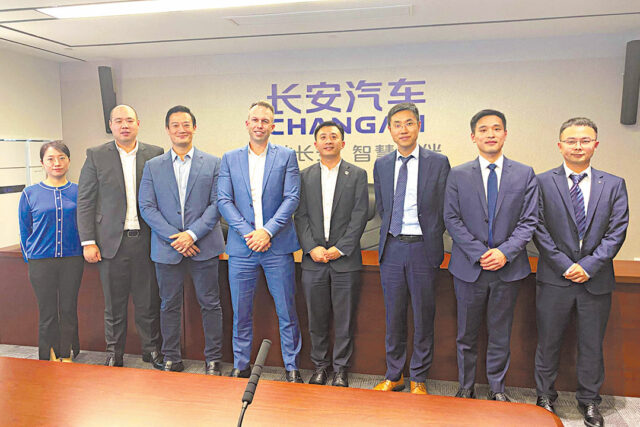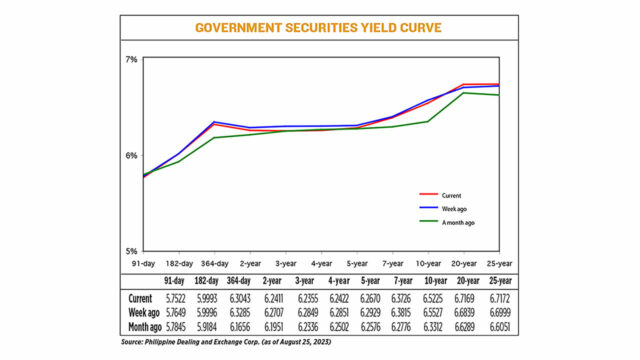On Aug. 18, the Department of Linguistics in the College of Social Sciences and Philosophy of the University of the Philippines (UP) Diliman launched its Archive Classics series, reprints of “monumental work in Philippine linguistics that paved the way for research in the field, and continue to influence current studies on Philippine languages.”
The first such monumental piece is Otto Johns Scheerer’s 1932 paper titled, “Sagen de Atayalen auf Formosa (Legends of the Atayal people on Formosa),” originally published in the 1932 issue of Zeitschrift fur Eingeborenen-Sprachen, a German periodical.
Otto Johns Scheerer came to the Philippines in 1882 and worked for some private German firms in the country before he served in various high positions in the local government. In his later years, he taught German at UP and was the Linguistic Department’s second Chair (succeeding Dr. Trinidad H. Pardo de Tavera) until he retired in 1929 as the first Professor Emeritus of Philippine Linguistics. It was during an immersion trip to Japan in 1930 that he researched on the Atayal people on Formosa, then an island of Japan.
Thus it is most fitting that Scheerer’s first published work should be the first in the maiden issue of Archive Classics, the official journal of the UP Linguistics, which is a revival of Scheerer’s The Archive, which collated the research of his students in his time. The German Embassy in Manila funded the professional English translation by Dr. Markus Locker of the Loyola School of Theology, Ateneo de Manila University, of “The Legends of the Atayal” and its publication (a bi-lingual German-English edition), by the UP Department of Linguistics.
At the Archive Classics launch, Dr. Richard Scheerer spoke about his grandfather, Otto Scheerer, and his “Academic Journey in the Philippines.” There was a subliminal message of love of country in the recounting, by this member of the third generation, of Filipino cultural and social history through the mind and heart of a German emigrant, Otto, who found refuge and acceptance by the Filipino people. Yes, the old legends of the Atayals told of a nation’s birth and freedom just as many small nations, including the Philippines, were fighting for independence in those turbulent times. Germany, Otto’s home country, was undergoing horrifying social, political, and economic upheavals before World War II exploded.
O. Scheerer pointed out linguistic similarities between Atayal and the Filipino language, predominantly Tagalog, and the other major Philippine languages — Iloko, Pampango, Pangasinan, Bikol, Bisaya, Ibanag, Batan and Naboloy. Words like “bato” (stone), balay (house), dakal (meaning “big” in Pampango and Iloko “dakel”); nano (Pampango “that” or “what”) and the article “na” (Tagalog na meaning “the”) are almost identical. Many verbs and action words sound so like the Filipino words with the same meaning, like “bigan ta” in the telling of the Atayal legend, which means “give gift” like the Tagalog “bigyan kita.”
But what was more thought-provoking was from the slide presentation of Dr. Richard Scheerer on his grandfather Otto’s analysis of the linguistic similarities between the Atayal and the Filipino languages — that the passive voice seems to be instinctively used in verbal communication, which is generally true in Malay and Austronesian languages. “One of the most interesting phenomena with regard to the expression and use of the Passive is presented by the languages of the Philippine Islands” — wrote Otto Scheerer, quoting H.C. von der Gabelentz’ 1863 paper, “Das Passivium.” O. Scheerer, in a 1924 paper, reiterated that “The essential difference between the verbs of the Europeans and the Philippine languages is the use of the Passive Voice… The Favorlang (a now extinct language from the west coast of Taiwan) in Formosa comes closest to the Filipino languages in terms of the formation and use of passive forms, specially as it has, like them, a triple passive form…”
Dr. Richard Scheerer clarified that “Triple passive refers to a language that has three ways to turn a verb stem into passive voice, using such affixes as an, in, i, etc. (i.e., tinapon, kinain). Example: a.) active voice = John threw the ball; b.) passive voice = The ball was thrown by John, c.) Tagalog passive = Tinapon ni Juan ang bola.”
He cautioned about “a misuse of the linguistic term ‘Passive Voice.’ It does not mean that the speakers are passive. Some of the fierce aboriginal tribes in Australia and New Zealand use the passive voice. The old thinking about the passive voice is that the speakers were not mentally sophisticated. That attitude is no longer accepted by modern linguists.”
But to an intuitive grammarian like this writer (an English major in baccalaureate degree), the use of the passive voice, even in a simple declaratory sentence, can convey nuances of approval or disapproval, perhaps even reaction to one’s situation and the actions of others. Take for example the declaration in the Active Voice, “The dog bit the man” — so what? But when declared in the Passive Voice, “The man was bitten by the dog,” the subject “man” is the receiver of the action — pity the man; bad dog!
Could it be that the predilection of the Filipino and, similarly, its Austronesian neighbors for the Passive Voice in its indigenous poems and songs somehow keep vestiges of the angst of being victim to the dominance of others? “The Legends of the Atayal” tells of the obstacles and travails of the people oppressed and threatened by a monster. They are helped by the deity to “cross the river” (symbolic of freedom) to escape, and to ensure that the deity will continue to protect them, they ask the crow (all talk, no action) and the bird (action agad) to compete for the post of mediator. The bird wins. He will be the Active Voice to the people’s Passive Voice.
“Florante at Laura,” written by Francisco Baltazar, who was known as “Balagtas,” is an “awit” (song/poem) for freedom, like “The Legends of the Atayal.” The poem was actually written while Balagtas was serving time in a Manila prison, beginning around 1835 or 1836, and published in 1838 after his release. Though the storyline of “Florante at Laura” was autobiographical to Balagtas’ problematic love for his own “Selya” (Maria Asuncion Rivera), the metaphors and similes, apostrophes and figures of speech that abound in the poem loudly whisper of the pains of an oppressed people crying out for freedom from the foreign colonizers. Much of traditional romantic literature is in the Passive Voice of the victim and sufferer.
The conflict in Balagtas’ “awit” was resolved (Passive Voice) in the happy ending of Florante and Laura getting married, a double-wedding with the Muslim prince Aladin and Flerida (a sub-plot for the Muslim-Christian conflict) being baptized in the Christian faith. Deus ex machina. God speaks always in the Active Voice.
But perhaps the passivity of the Filipino is most evident in the “bahala na” attitude towards conflict. Passivity is complacency. “Bahala na” or “God (Bathala) will take care of it” is the perverted over-reliance of Christian trust in God that self-justifies inaction and indifference, even against oppression, prejudice, and the transgression of human rights by those in ascendancy of power and influence in mundane life. Where is the groundswell of protest against the evident disarray of moral values and the blatant corruption in government and society today? Bahala na!!
But “God only helps those who help themselves,” Benjamin Franklin said in his popular magazine for day-to day living in colonial America, Poor Richard’s Almanack (1736). Written in the Active Voice.
Amelia H. C. Ylagan is a doctor of Business Administration from the University of the Philippines.
ahcylagan@yahoo.com














